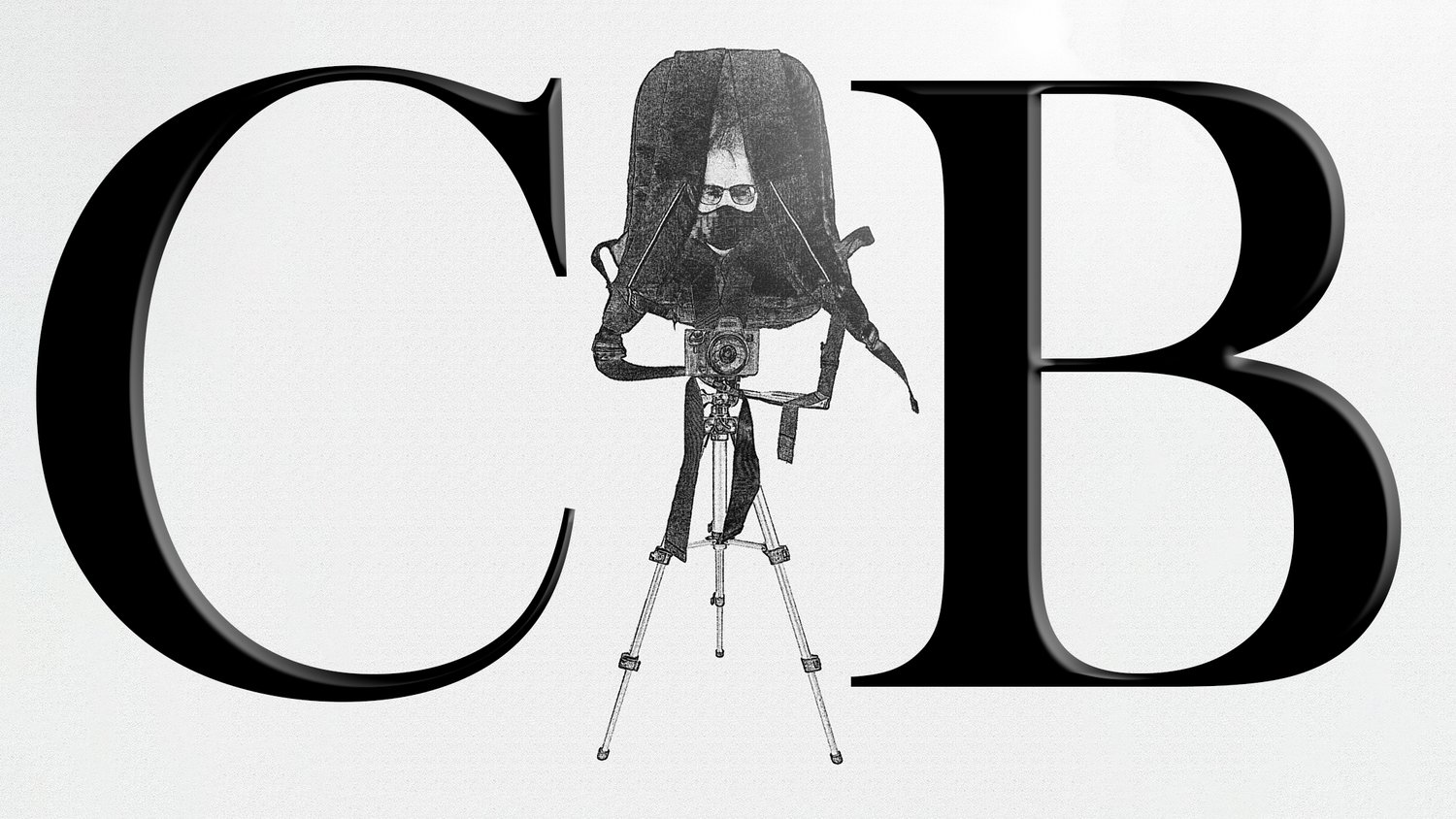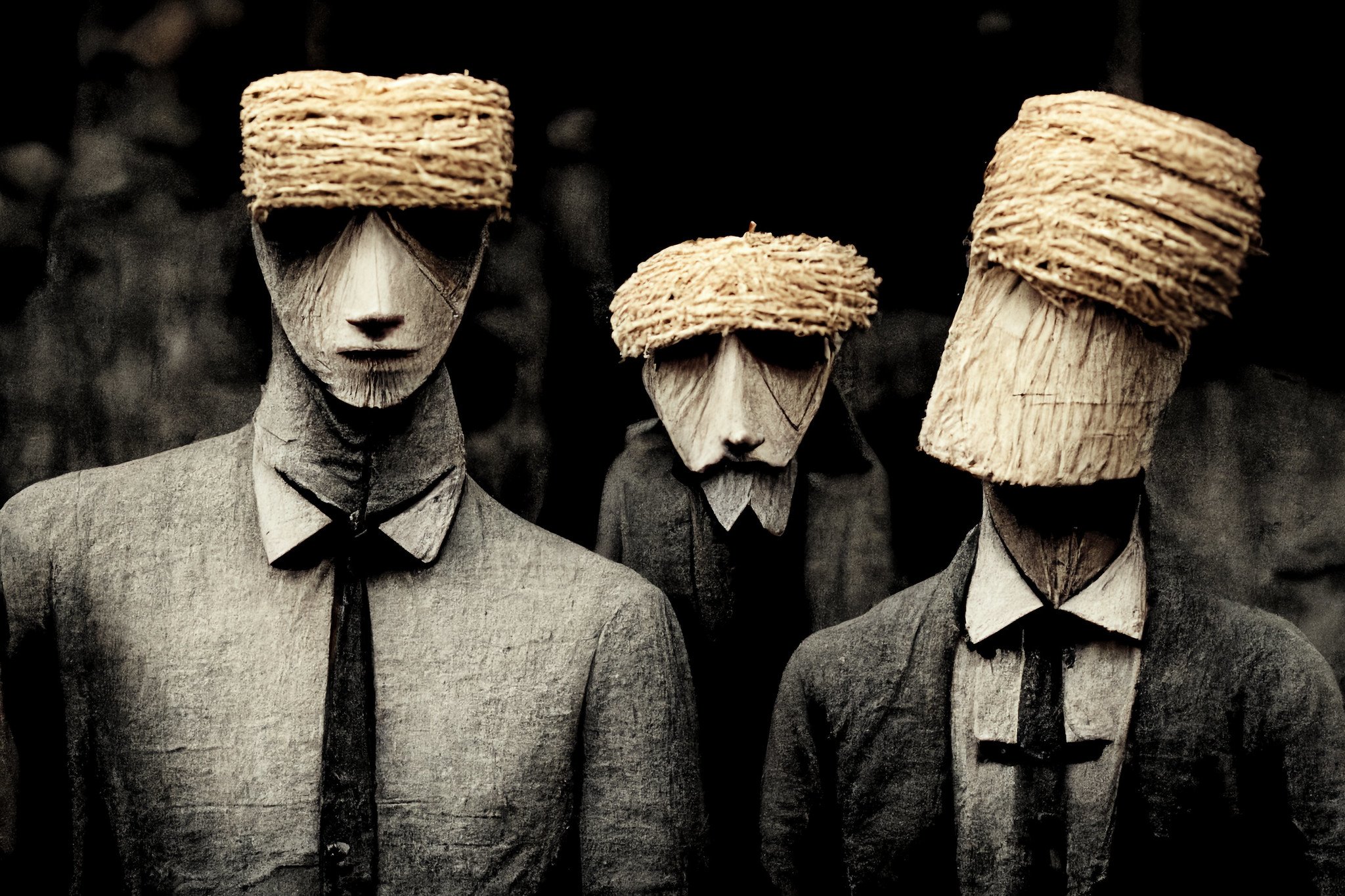T.S. Eliot’s Poem “The Hollow Men” Illustrated by Artificial Intelligence [Video]
Can Midjourney’s AI live up to the challenge?
I’ve been experimenting with several of the AI platforms, attempting to learn all that I can about how the systems work and how to produce the best images from the prompts that I provide. My favorite platform is Midjourney, which is what I used to create the images for this poem. It’s a relatively straight-forward process over all, but there is a bit of learning when it comes to some of the finer aspects of telling AI exactly what it is that you want. Whether then AI can actually provide you with your desired results is another issue altogether, as I’ve discovered first-hand over the past week.
I haven’t officially made an announcement yet, but you can buy my AI work in the form of prints and merchandise at my new AI store front. It’s a separate enterprise from my normal artistic pursuits but I felt that I didn’t want to get left behind when this technology really takes off. . .which will probably happen tomorrow! That may seem like an exaggeration, but anyone using AI to create art will tell you that ‘tomorrow’ could be any day now. Do check out my prints though and do let me know if there’s anything that a(I) can create for you.
My Favorite Poem
Which brings me to The Hollow Men, by T.S. Eliot, my favorite poem. I thought what better way to put Midjourney’s AI to the test? Surely, not even artificial intelligence can handle all of Eliot’s lines in a cohesive manner. I found this to be true. But in some cases, the visuals came pretty close to matching a visual interpretation of the lines. I’ll let you be the judge though.
For each of the images below, the corresponding lines from the poem were fed into the bot a prompts, exactly as written, no other commands given except to make the images all in a 3:2 ratio. Other than that, you’re seeing only the results from Eliot’s own words.
I’ve also created a YouTube version here. You can watch it at the end of the post as well.
The Hollow Men
1
We are the hollow men
We are the stuffed men
Leaning together
Headpiece filled with straw. Alas!
Our dried voices, when
We whisper together
Are quiet and meaningless
As wind in dry grass
Or rats' feet over broken glass
In our dry cellar
Shape without form, shade without colour,
Paralysed force, gesture without motion;
Those who have crossed
With direct eyes, to death's other Kingdom
Remember us-if at all-not as lost
Violent souls, but only
As the hollow men
The stuffed men.
II
Eyes I dare not meet in dreams
In death's dream kingdom
These do not appear:
There, the eyes are
Sunlight on a broken column
There, is a tree swinging
And voices are
In the wind's singing
More distant and more solemn
Than a fading star.
Let me be no nearer
In death's dream kingdom
Let me also wear
Such deliberate disguises
Rat's coat, crowskin, crossed staves
In a field
Behaving as the wind behaves
No nearer-
Not that final meeting
In the twilight kingdom
III
This is the dead land
This is cactus land
Here the stone images
Are raised, here they receive
The supplication of a dead man's hand
Under the twinkle of a fading star.
Is it like this
In death's other kingdom
Waking alone
At the hour when we are
Trembling with tenderness
Lips that would kiss
Form prayers to broken stone.
IV
The eyes are not here
There are no eyes here
In this valley of dying stars
In this hollow valley
This broken jaw of our lost kingdoms
In this last of meeting places
We grope together
And avoid speech
Gathered on this beach of the tumid river
Sightless, unless
The eyes reappear
As the perpetual star
Multifoliate rose
Of death's twilight kingdom
The hope only
Of empty men.
V
Here we go round the prickly pear
Prickly pear prickly pear
Here we go round the prickly pear
At five o'clock in the morning.
Between the idea
And the reality
Between the motion
And the act
Falls the Shadow
For Thine is the Kingdom
Between the conception
And the creation
Between the emotion
And the response
Falls the Shadow
Life is very long
Between the desire
And the spasm
Between the potency
And the existence
Between the essence
And the descent
Falls the Shadow
For Thine is the Kingdom
For Thine is
Life is
For Thine is the
This is the way the world ends
This is the way the world ends
This is the way the world ends
Not with a bang but a whimper.
ChatGPT4’s Interpretation of The Hollow Men
T.S. Eliot's poem "The Hollow Men" is a haunting meditation on the human condition. The poem is a complex and dense work that explores themes of emptiness, despair, and spiritual emptiness. Eliot wrote the poem in the aftermath of World War I, a time of great social and cultural upheaval, and it reflects the disillusionment and despair that many felt at the time.
The poem opens with the lines "We are the hollow men / We are the stuffed men," a paradoxical statement that sets the tone for the rest of the work. The "hollow men" are empty and devoid of substance, while the "stuffed men" are bloated with meaningless material possessions. Eliot's use of paradox and irony throughout the poem serves to underscore the emptiness and futility of the human condition.
The hollow men are described as "shape without form, shade without colour," indicating their lack of identity and individuality. They are "quiet and meaningless," existing in a state of apathy and resignation. The poem also features several allusions to Dante's Inferno, with references to the "twilight kingdom" and the "dead land." These allusions serve to reinforce the sense of spiritual emptiness and despair that permeates the poem.
One of the most famous lines from the poem is "This is the way the world ends / Not with a bang but a whimper." This line captures the sense of quiet resignation and acceptance of the emptiness and futility of life that pervades the poem. The poem ends with a repetition of the phrase "This is the way the world ends," underscoring the sense of finality and inevitability of the human condition.
Overall, "The Hollow Men" is a powerful and thought-provoking work that explores the darkest aspects of the human psyche. Eliot's use of paradox, irony, and allusion creates a complex and layered poem that rewards careful reading and reflection. The poem's themes of emptiness and despair continue to resonate with readers today, making it a timeless work of literature.


























